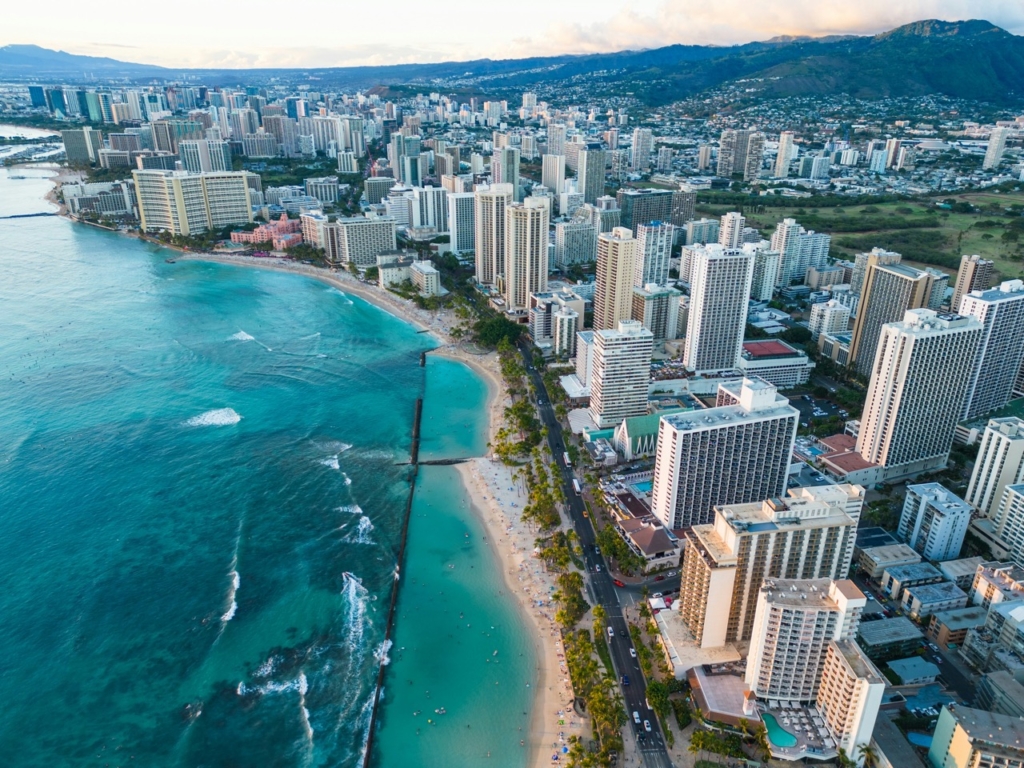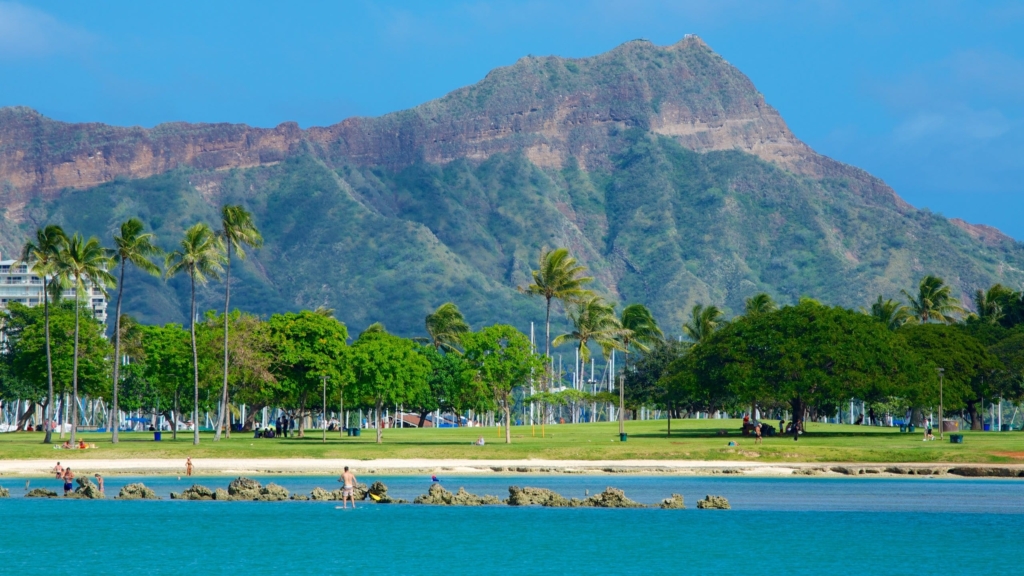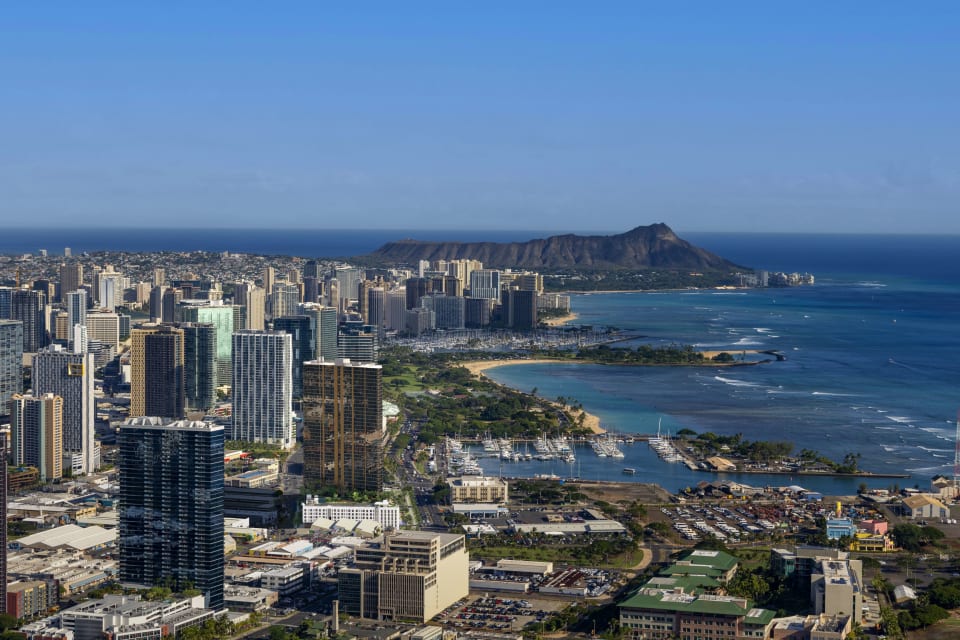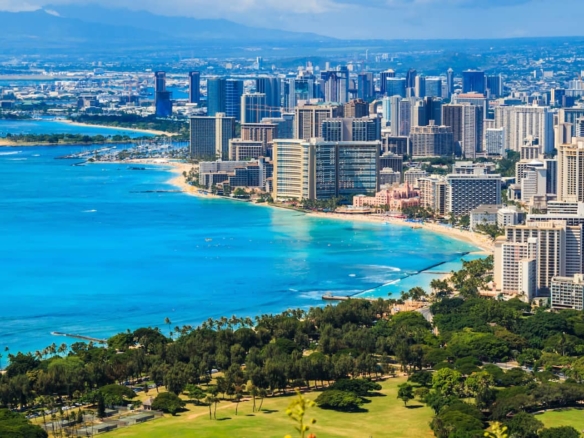As we progress through 2025, the Kakaako property investment landscape continues to evolve, presenting both seasoned investors and first-time buyers with compelling opportunities in one of Hawaii’s most prestigious neighborhoods. This former industrial district has undergone a remarkable transformation over the past decade, emerging as Honolulu’s premier urban destination that seamlessly blends modern luxury living with the natural beauty and cultural richness that defines Hawaii.
The decision between purchasing Kakaako real estate as an investment property versus a primary residence has become increasingly complex in 2025, as current market conditions present unique advantages and considerations for both strategies. With mortgage rates stabilizing and inventory levels providing buyers with more options than in previous years, this represents an opportune time to carefully evaluate your property goals and make an informed decision that aligns with your financial objectives and lifestyle preferences.
Understanding the nuances of Kakaako’s current market dynamics, financing landscape, and long-term growth trajectory is essential for making a property decision that maximizes your investment potential while meeting your personal housing needs. Whether you’re drawn to the neighborhood’s modern high-rise towers, panoramic ocean views, or walkable urban lifestyle, the choice between investment and primary residence ownership will significantly impact your financial future and daily living experience in Hawaii’s most dynamic community.
The complexity of this decision is further amplified by Hawaii’s unique economic environment, which combines limited land availability, diverse tourism demands, and a growing population of remote workers who have discovered they can maintain mainland careers while enjoying island living. These factors create both opportunities and challenges that require careful analysis to ensure your property decision supports your long-term success and satisfaction.
Understanding Kakaako’s Real Estate Environment in 2025
Transformation and Current Status
Kakaako has transformed from an industrial area into one of the Pacific’s most successful urban redevelopments, blending luxury living with Hawaii’s natural beauty. By 2025, new developments continue to enhance its appeal, offering world-class amenities while preserving local character.

Beyond modern architecture, Kakaako functions as a complete urban ecosystem. Walkable streets, bike paths, and public transit connect residents to beaches, mountains, and cultural attractions, creating a sustainable community that appeals to eco-conscious investors and residents.
The neighborhood attracts a wide demographic: professionals value its proximity to Honolulu’s business districts, families appreciate safety and schools, and retirees enjoy low-maintenance condos with access to top medical care. This diversity supports steady demand for both rentals and ownership.
Architecturally, Kakaako features striking residential towers by renowned designers, offering ocean-view pools, fitness centers, spas, and concierge services—essentially resort living within the city.
Market Dynamics and 2025 Trends
In 2025, Kakaako’s market is more balanced than in past seller-driven years, creating fairer opportunities for buyers and investors. Hawaii’s overall housing market has stabilized, with property prices better aligned to income potential, giving buyers more time for careful decisions.
Mortgage rates are expected to remain steady between 6–7%, providing predictability for financial planning, while inventory levels have grown due to completed projects and seller activity. This gives buyers more choices without signaling weakened demand.
Meanwhile, Kakaako’s rental market stays strong, supported by population growth, economic diversification, and its lifestyle appeal. High-quality tenants continue paying premium rents, ensuring solid cash flow and long-term confidence for investors.
Investment Property Strategy: Advanced Wealth Building Through 2025 Kakaako Real Estate
Comprehensive Investment Property Financial Analysis
The financial benefits of Kakaako property investment in 2025 extend well beyond simple rental income generation, encompassing tax advantages, appreciation potential, and portfolio diversification benefits that can significantly enhance your overall wealth building strategy. Understanding these multiple benefit streams helps investors make informed decisions about property selection, financing structure, and long-term holding strategies.
Cash Flow Opportunities and Market Positioning
Kakaako’s rental market remains strong thanks to high demand and premium pricing. Young professionals in finance, tech, and healthcare seek modern, amenity-rich housing, while families and executives drive demand for larger, luxury units. One-bedroom rentals bring $3,500–$5,500 monthly, two-bedrooms $5,000–$8,500, and executive housing $7,000–$12,000. Where permitted, short-term vacation rentals earn $200–$450 per night, though they require more management and compliance.
Tax Advantages for Investors
Tax benefits significantly enhance returns. Depreciation allows ~$36,000 in deductions annually on a $1M condo, reducing taxable income. Investors also deduct expenses like maintenance, travel, management fees, and mortgage interest. The 1031 exchange lets investors defer capital gains by reinvesting in new properties, preserving capital for growth. Together, these advantages boost cash flow while building equity over time.
Appreciation Potential and Growth Outlook
Hawaii’s limited land supply and zoning restrictions ensure long-term value growth, particularly in Kakaako where development space is shrinking. Population growth, remote work migration, and tourism recovery further strengthen demand. Unlike Waikiki, Kakaako benefits from both residential stability and economic growth, making it less vulnerable to tourism downturns.
International investors, especially from Asia-Pacific markets, continue to see Hawaii real estate as a secure, high-value asset. With its luxury amenities and global appeal, Kakaako remains a prime target for long-term appreciation and portfolio diversification.
Detailed Investment Property Requirements and Modern Management Strategies
Advanced Financing Preparation and Optimization
Investment property financing in 2025 requires comprehensive preparation and understanding of current lending standards and market conditions. The financing landscape has evolved to include enhanced due diligence requirements and risk assessment protocols that investors must navigate successfully to secure optimal loan terms and complete their property acquisitions.
Down payment requirements for Kakaako property investment reflect both the premium nature of these properties and lenders’ risk assessment of luxury condominium investments. Most conventional lenders require minimum down payments of 20-25% for standard investment properties, with luxury condominiums over $1 million often requiring 25-30% down payments. Some lenders may require even higher down payments for foreign national buyers or investors with complex financial situations involving multiple properties or business entities.
The qualification process for investment property loans involves significantly more scrutiny than primary residence financing, with lenders evaluating not only the borrower’s current financial capacity but also their experience with rental property management and overall investment portfolio stability. Credit score requirements typically start at 680 for competitive rates, with the best terms reserved for borrowers with scores above 740 and substantial liquid assets beyond the down payment and closing costs.
Cash reserve requirements have increased in 2025, with most lenders requiring reserves equivalent to 3-6 months of total property expenses including mortgage payments, HOA fees, property taxes, insurance, and estimated maintenance costs. These reserves must be documented in liquid accounts and cannot include retirement funds or other restricted assets. The reserve requirement reflects lenders’ recognition that investment properties require ongoing capital for maintenance, improvements, and potential vacancy periods.
Interest rate premiums for investment properties typically range from 0.50% to 1.00% above primary residence rates, depending on the borrower’s financial profile, property characteristics, and loan amount. While these premiums represent additional costs, they must be evaluated within the context of rental income potential and tax benefits that can offset the higher borrowing costs. Many investors find that the rental income and tax advantages more than compensate for the higher interest rates, particularly in premium markets like Kakaako.
Modern Property Management Excellence and Technology Integration
Property management in 2025 has evolved significantly through technology integration and professional service enhancements that enable more efficient operations and improved tenant satisfaction. Successful Kakaako real estate investment requires understanding these modern management approaches and implementing systems that maximize returns while minimizing owner involvement and stress.
Self-management strategies have been revolutionized through digital platforms that streamline tenant screening, rent collection, maintenance coordination, and financial reporting. These platforms provide property owners with comprehensive tools for managing all aspects of rental operations from anywhere in the world, making it possible to successfully manage Kakaako properties regardless of your geographic location.
Tenant screening in 2025 utilizes advanced digital platforms that provide comprehensive background checks, credit analysis, employment verification, and rental history reports within minutes rather than days. These systems help property owners identify high-quality tenants who are more likely to pay rent on time, maintain properties carefully, and develop long-term rental relationships that reduce turnover costs and vacancy periods.
Professional property management services have also evolved to provide more comprehensive and technology-enhanced services while maintaining personal attention to tenant relationships and property maintenance. Full-service management companies typically charge 8-12% of gross rental income but provide complete tenant management, maintenance coordination, financial reporting, and market analysis services that can actually increase net returns through improved operations and reduced vacancy periods.
The choice between self-management and professional management often depends on your experience level, available time, geographic proximity to the property, and personal preferences for involvement in day-to-day operations. Many successful investors start with professional management to learn the market and operational requirements, then transition to self-management as they gain experience and confidence.
Primary Residence Strategy: Maximizing Homeownership Benefits in Hawaii’s Premier Urban Community
Comprehensive Primary Residence Financial Advantages

Choosing to make a Kakaako property your primary residence in 2025 provides numerous financial benefits that extend well beyond the obvious lifestyle advantages of living in one of Hawaii’s most desirable neighborhoods. These financial benefits can result in substantial savings over time and contribute significantly to your overall wealth building strategy, even though the property isn’t generating rental income.
Detailed Analysis of 2025 Financing Advantages
Primary residence financing in 2025 offers significantly more favorable terms than investment property loans, making homeownership more accessible and affordable for qualified buyers. These financing advantages can result in savings of hundreds of dollars monthly and tens of thousands of dollars over the life of your mortgage, making the total cost of homeownership substantially lower than investment property ownership.
Conventional loan programs for primary residences offer down payment options as low as 3% for qualified first-time homebuyers and 5-10% for repeat buyers with good credit histories. These low down payment requirements enable buyers to preserve capital for other investments, home improvements, or financial reserves while still achieving homeownership in one of Hawaii’s most prestigious neighborhoods. The ability to purchase with minimal down payment also enables buyers to enter the market sooner rather than waiting years to accumulate larger down payments required for investment properties.
Interest rate advantages for primary residences typically range from 0.50% to 1.00% below investment property rates, translating to significant monthly payment savings and reduced total interest costs over the loan term. For a $800,000 mortgage, a 0.75% interest rate reduction results in approximately $400 monthly savings and over $140,000 in total interest savings over a 30-year loan term. These savings can be redirected toward other investments, home improvements, or lifestyle enhancements that improve your overall financial position and quality of life.
Government-backed loan programs provide additional financing advantages for qualified primary residence buyers. FHA loans enable homeownership with down payments as low as 3.5% and flexible credit requirements that accommodate buyers who might not qualify for conventional financing. VA loans offer eligible veterans and active military personnel the opportunity to purchase with zero down payment and no private mortgage insurance requirements, making homeownership immediately accessible without substantial upfront capital requirements.
Hawaii Homestead Exemption and Property Tax Benefits
Hawaii’s homestead exemption program provides substantial property tax relief for primary residence owners, creating ongoing savings that accumulate to significant amounts over time. In 2025, eligible homeowners can exempt the first $80,000 to $120,000 of their property’s assessed value from property taxes, depending on age, income, and disability status qualifications.
For a typical Kakaako condominium assessed at $900,000, the homestead exemption can reduce the taxable assessment to $780,000 to $820,000, resulting in annual property tax savings of $800 to $1,200 depending on the specific exemption amount and current tax rates. Over a 10-year ownership period, these savings accumulate to $8,000 to $12,000 in reduced property tax payments, representing significant value that investment property owners cannot access.
Additional property tax benefits include protection from dramatic assessment increases during periods of rapid appreciation, caps on annual assessment growth, and enhanced exemptions for senior citizens and disabled veterans. These protections provide predictable housing costs and protection against property tax increases that might otherwise make homeownership unaffordable during periods of rapid property value appreciation.
Lifestyle and Community Integration Benefits
Living in Kakaako as your primary residence provides immersive access to one of Hawaii’s most sophisticated urban communities, with lifestyle benefits that extend far beyond simple housing accommodation. The neighborhood’s design and amenities create a resort-like living experience that many residents describe as permanent vacation, combining urban convenience with tropical beauty in ways that are unique to Hawaii.
The walkable nature of Kakaako enables residents to significantly reduce transportation costs and time while improving their health and environmental impact through increased walking and cycling. Many residents find they can eliminate or reduce car dependency, saving substantial amounts on vehicle payments, insurance, fuel, and parking costs while enjoying a more active and environmentally sustainable lifestyle.
Access to building amenities provides residents with services and facilities that would cost thousands of dollars monthly if purchased separately. Premium fitness centers with personal training services, spa facilities, infinity pools with ocean views, and concierge services create a lifestyle that rivals luxury resorts while providing the stability and personalization of homeownership.
The sense of community that develops in well-managed Kakaako buildings creates social connections and support networks that enhance both personal satisfaction and property values. Many residents develop lasting friendships with neighbors, participate in building social events, and contribute to community gardens and shared spaces that make the buildings feel like cohesive neighborhoods rather than anonymous housing developments.
Primary Residence Considerations and Strategic Trade-offs
Opportunity Cost Analysis in Current Investment Environment

When you commit substantial capital to your primary residence, you’re making a strategic decision about resource allocation that impacts your overall investment portfolio and wealth building potential. In 2025’s investment environment, this opportunity cost must be carefully evaluated against alternative investment opportunities and the lifestyle benefits of homeownership.
The capital committed to primary residence down payments and ongoing mortgage payments represents funds that could potentially generate returns through other investment vehicles such as stock market investments, business opportunities, or additional real estate acquisitions. For a $200,000 down payment on a Kakaako condominium, alternative investments might generate annual returns of 6-10% or higher, representing $12,000 to $20,000 in potential annual income that is foregone in favor of homeownership benefits.
However, this opportunity cost analysis must consider the comprehensive benefits of homeownership, including housing cost stability, tax benefits, forced savings through mortgage principal payments, and lifestyle advantages that have monetary value even if not directly quantifiable. Many homeowners find that the security, stability, and lifestyle benefits of homeownership provide value that exceeds the potential returns from alternative investments, particularly when considering the risks and management requirements associated with other investment options.
The concentration risk associated with primary residence ownership becomes particularly relevant in expensive markets like Kakaako, where a single property might represent 40-60% of a household’s total net worth. This concentration creates vulnerability to local market fluctuations and limits portfolio diversification that might provide more stable overall returns. However, this risk must be balanced against the housing security and lifestyle benefits that homeownership provides, along with Hawaii’s historically strong property appreciation that has protected homeowner wealth over extended periods.
Tax Benefit Limitations and Optimization Strategies
Primary residence ownership provides meaningful but limited tax benefits compared to investment property ownership. Understanding these limitations helps homeowners optimize their available deductions while developing realistic expectations about tax savings potential.
Mortgage interest deductibility remains one of the primary tax benefits for homeowners, allowing deduction of interest paid on mortgages up to $750,000 in principal amount. For most Kakaako homeowners, this deduction provides substantial tax relief, particularly in the early years of mortgage ownership when interest represents the majority of monthly payments. However, tax reform limitations have reduced the benefit compared to previous years, and homeowners must itemize deductions to access this benefit.
Property tax deductibility is subject to the $10,000 annual limitation on state and local tax deductions, which may limit the full benefit for homeowners in Hawaii’s higher property tax environment. This limitation is particularly relevant for luxury property owners whose annual property tax obligations may exceed the deductible amount, requiring careful tax planning to optimize overall deduction strategies.
The absence of depreciation benefits for primary residences represents a significant difference from investment property ownership, as homeowners cannot deduct the theoretical decrease in property value over time. Similarly, maintenance and improvement expenses are not deductible for primary residences, meaning homeowners must fund all upkeep and enhancement projects with after-tax dollars rather than deductible business expenses.
Detailed 2025 Market Analysis and Investment Potential Assessment
Current Rental Market Dynamics and Demand Analysis
The Kakaako rental market in 2025 demonstrates exceptional strength across multiple tenant categories, creating stability and growth potential that supports confident investment property decisions. Understanding these demand sources and their characteristics enables investors to position their properties for maximum success while minimizing vacancy risk and management challenges.
Evolving Professional Workforce Demand
The professional workforce in Honolulu has expanded significantly in recent years, driven by economic diversification, remote work adoption, and Hawaii’s growing reputation as a business-friendly environment for technology and financial services companies. These professionals seek housing that supports their career ambitions while providing the lifestyle benefits that attracted them to Hawaii.
Technology sector employees represent a growing segment of Kakaako renters, as companies like Google, Microsoft, and various startup organizations have expanded their Hawaii operations or enabled employees to work remotely from the islands. These tenants typically have higher incomes, stable employment, and strong preferences for modern amenities including high-speed internet, smart home features, and co-working spaces within their residential buildings.
Financial services professionals, including those working for major banks, investment firms, and insurance companies with Hawaii operations, seek housing that reflects their professional status while providing convenient access to downtown business districts. These tenants often prefer furnished or partially furnished accommodations and are willing to pay premium rates for buildings with concierge services, business centers, and entertainment facilities suitable for client meetings and networking events.
Healthcare professionals represent another stable rental demographic, including physicians, nurses, and specialists working at The Queen’s Medical Center, Hawaii Pacific Health facilities, and other healthcare organizations. Traveling healthcare workers, including travel nurses and locum tenens physicians, often require short-term furnished accommodations and are willing to pay premium rates for quality housing with flexible lease terms.
Military and Government Sector Rental Demand
Hawaii’s substantial military presence creates consistent demand for quality rental housing, with Kakaako’s location providing convenient access to multiple military installations including Pearl Harbor, Hickam Air Force Base, and Marine Corps Base Hawaii. Military personnel often receive housing allowances that support rental rates in the $3,000 to $6,000 monthly range, depending on rank and family size.
Government employees, including federal workers, state employees, and contractors working on government projects, represent another stable rental demographic with predictable income and housing allowance benefits. These tenants typically seek longer-term leases and maintain properties carefully, making them attractive to property owners seeking stable, low-maintenance rental relationships.
Tourism and Hospitality Industry Evolution
The tourism industry’s evolution toward higher-value, longer-stay visitors has created new rental opportunities for Kakaako properties. Extended-stay business travelers, digital nomads, and affluent tourists seeking alternatives to traditional hotel accommodations represent growing market segments willing to pay premium rates for quality residential accommodations.
This trend has been accelerated by remote work adoption and the growth of “workation” travel, where professionals combine work responsibilities with extended vacations in desirable locations like Hawaii. These guests typically stay for weeks or months rather than days, providing more stable income than traditional vacation rentals while commanding higher rates than long-term residential tenants.
2025 Property Appreciation Drivers and Market Fundamentals
Infrastructure Development and Neighborhood Enhancement
Kakaako’s continued development in 2025 includes significant infrastructure improvements that enhance both property values and quality of life for residents. The Honolulu Authority for Rapid Transportation (HART) rail project, while delayed, continues progressing toward completion with stations planned near Kakaako that will improve connectivity to other parts of Oahu and reduce traffic congestion.
Transportation infrastructure improvements extend beyond rail to include enhanced bus service, bike lane development, and pedestrian-friendly streetscape enhancements that make the neighborhood more attractive to residents who prefer car-free or car-light lifestyles. These improvements support property values by enhancing accessibility and reducing transportation costs for residents.
Utility infrastructure modernization includes enhanced electrical grid capacity to support growing residential and commercial demand, improved telecommunications infrastructure enabling faster internet speeds and better cellular coverage, and water and sewer system upgrades that support continued development while maintaining environmental standards.
Economic Diversification and Employment Growth
Hawaii’s economy in 2025 reflects successful diversification efforts that reduce dependence on tourism while maintaining its important economic contribution. This diversification creates more stable employment opportunities that support residential demand and reduce economic volatility that might affect property values during tourism downturns.
Technology sector growth includes expansion of existing companies and arrival of new businesses attracted by Hawaii’s strategic Pacific location, educated workforce, and quality of life benefits that help attract and retain talented employees. These companies often provide housing allowances or relocation assistance that supports premium rental markets and property purchases.
Healthcare sector expansion reflects Hawaii’s aging population and role as a medical destination for Pacific region patients seeking advanced care. This growth creates demand for both permanent housing for healthcare workers and temporary accommodations for patients and families receiving extended medical treatment.
Financial services growth includes expansion of asset management, insurance, and banking operations that serve both local markets and broader Pacific region clients. These businesses employ professionals with higher incomes who seek quality housing that reflects their professional status and supports their lifestyle preferences.
Strategic Decision Framework: Comprehensive Analysis for 2025 Property Success
Advanced Financial Assessment and Planning Methodologies
Making optimal Kakaako property decisions in 2025 requires sophisticated financial analysis that extends beyond simple affordability calculations to encompass long-term wealth building potential, lifestyle costs and benefits, and risk management considerations. This comprehensive approach ensures your property decision supports both immediate needs and long-term financial objectives.
Investment Property Financial Modeling and Primary Residence Cost Analysis
Successful investment property analysis requires developing comprehensive financial models that include detailed cash flow projections accounting for all income sources and expense categories. Rental income projections should reflect current market rates with conservative growth estimates of 2-3% annually, or 4-5% in premium markets like Kakaako, while factoring in periodic vacancy periods typically estimated at 5-10% annually depending on tenant quality and market conditions.
Operating expense analysis must encompass all ownership costs, including HOA fees that can range from $800 to $2,000+ monthly in Kakaako depending on building amenities and services. Property taxes, insurance, maintenance reserves, property management fees, and periodic capital improvements all impact net cash flow and require accurate estimation for realistic return projections. Capital improvement planning becomes particularly important for luxury condominium investments, as maintaining competitive market position may require periodic updates to fixtures, appliances, and interior elements, with potential building assessments requiring careful review of HOA reserve studies.
For primary residence purchases, financial planning must encompass total cost of ownership while considering lifestyle benefits and the forced savings aspects of homeownership. Housing cost analysis should follow traditional guidelines limiting total housing expenses to 28-30% of gross income, though this percentage may be higher in expensive markets like Hawaii. The forced savings benefit of mortgage principal payments represents a significant advantage, as each monthly payment builds equity through principal reduction, creating automatic wealth accumulation over the 30-year mortgage term that supplements any property appreciation gains.
Maintenance and improvement budgeting requires estimating 1-3% of property value annually for ongoing upkeep, repairs, and periodic improvements. For a $900,000 Kakaako condominium, this represents $9,000 to $27,000 annually, though actual costs vary based on property age, building quality, and individual maintenance preferences. Proper budgeting for these expenses prevents financial stress and ensures properties maintain their value and appeal over time.
Risk Assessment and Management Strategies
Investment Property Risk Analysis and Mitigation
Kakaako property investment involves various risks that must be identified, evaluated, and managed to ensure successful long-term performance. Understanding these risks enables investors to make informed decisions and implement strategies that protect their investment while maximizing returns.
Market risk represents the possibility that property values or rental rates could decline due to economic conditions, oversupply, or changes in neighborhood desirability. While Kakaako’s supply constraints and diverse demand sources provide some protection against market downturns, investors must understand that all real estate investments involve market risk that can affect both cash flow and equity value.
Tenant risk encompasses the possibility of rental income disruption due to vacancy periods, tenant defaults, or property damage caused by irresponsible tenants. This risk can be managed through comprehensive tenant screening, adequate insurance coverage, security deposits, and maintaining financial reserves for vacancy periods and unexpected expenses.
Liquidity risk refers to the challenge of quickly converting real estate investments to cash if needed for other opportunities or financial emergencies. Real estate transactions typically require 30-90 days to complete and involve substantial transaction costs that can reduce net proceeds. Investors must ensure they have adequate liquid assets beyond their real estate investments to handle unexpected financial needs.
Management risk involves the time, effort, and expertise required to successfully operate rental properties. Poor management decisions regarding tenant selection, maintenance, or market positioning can significantly impact investment returns. This risk can be mitigated through education, professional management services, or partnership with experienced investors who provide guidance and support.
Primary Residence Risk Considerations and Protection Strategies
Primary residence ownership involves different risks than investment properties, though many of these risks can be managed through proper planning, insurance coverage, and financial preparation. Understanding these risks helps homeowners make informed decisions and implement protection strategies.
Market concentration risk occurs when your primary residence represents a large percentage of your total net worth, creating vulnerability to local real estate market fluctuations. This risk can be managed through diversification of other investments, maintaining liquid emergency reserves, and ensuring your housing costs remain sustainable even during economic challenges.
Employment risk affects your ability to maintain mortgage payments and homeownership costs if you experience job loss or income reduction. This risk is particularly relevant for homeowners whose employment is tied to Hawaii’s economy and might be affected by tourism fluctuations or other local economic challenges. Building emergency reserves equivalent to 6-12 months of housing expenses provides protection against temporary income disruptions.
Maintenance and improvement costs can create financial stress if not properly planned and budgeted. Unlike rental properties where these costs are tax-deductible business expenses, primary residence maintenance must be funded with after-tax dollars and can strain household budgets if major repairs or improvements become necessary unexpectedly.
Comprehensive Financing Strategies and Market Navigation for 2025
Advanced Investment Property Financing Optimization
Kakaako property investment financing in 2025 requires understanding not only current lending requirements but also strategies for optimizing loan terms, managing closing processes, and positioning yourself for future investment opportunities. The current market environment provides opportunities for prepared investors to secure favorable financing while building relationships with lenders for future transactions.
Conventional Loan Strategy and Lender Selection
The process of securing optimal investment property financing begins with understanding different lenders’ requirements, pricing structures, and service levels. Not all lenders are equal in their approach to luxury condominium financing, and selecting the right lender can significantly impact both your current transaction success and future investment opportunities.
National banks typically offer standardized loan programs with competitive rates but may have limited flexibility for unique situations or expedited closings. These lenders often have automated underwriting systems that provide quick preliminary approvals but may struggle with complex financial situations or non-standard property types.
Regional banks and credit unions often provide more personalized service and flexibility in underwriting decisions, particularly for borrowers with existing banking relationships or substantial assets. These institutions may offer portfolio lending options that enable more creative financing structures or faster closing timelines for qualified borrowers.
Local Hawaii banks bring specialized knowledge of island real estate markets and may have more flexible approaches to luxury condominium financing. These lenders understand the unique aspects of Hawaii property ownership, including HOA structures, building insurance requirements, and local market dynamics that might confuse mainland lenders.
Portfolio Lending and Relationship Banking Strategies
Portfolio lending represents an increasingly important financing option for serious real estate investors who plan to acquire multiple properties over time. These programs enable investors to develop ongoing relationships with lenders who understand their investment strategy and can provide more flexible financing terms as their portfolio grows.
Portfolio lenders often provide benefits including streamlined underwriting for repeat borrowers, competitive pricing for multiple property owners, and flexibility in loan terms that accommodate various investment strategies. Building relationships with portfolio lenders enables investors to move quickly when attractive opportunities arise and may provide access to off-market properties through the lender’s network.
Asset-based lending focuses





Join The Discussion